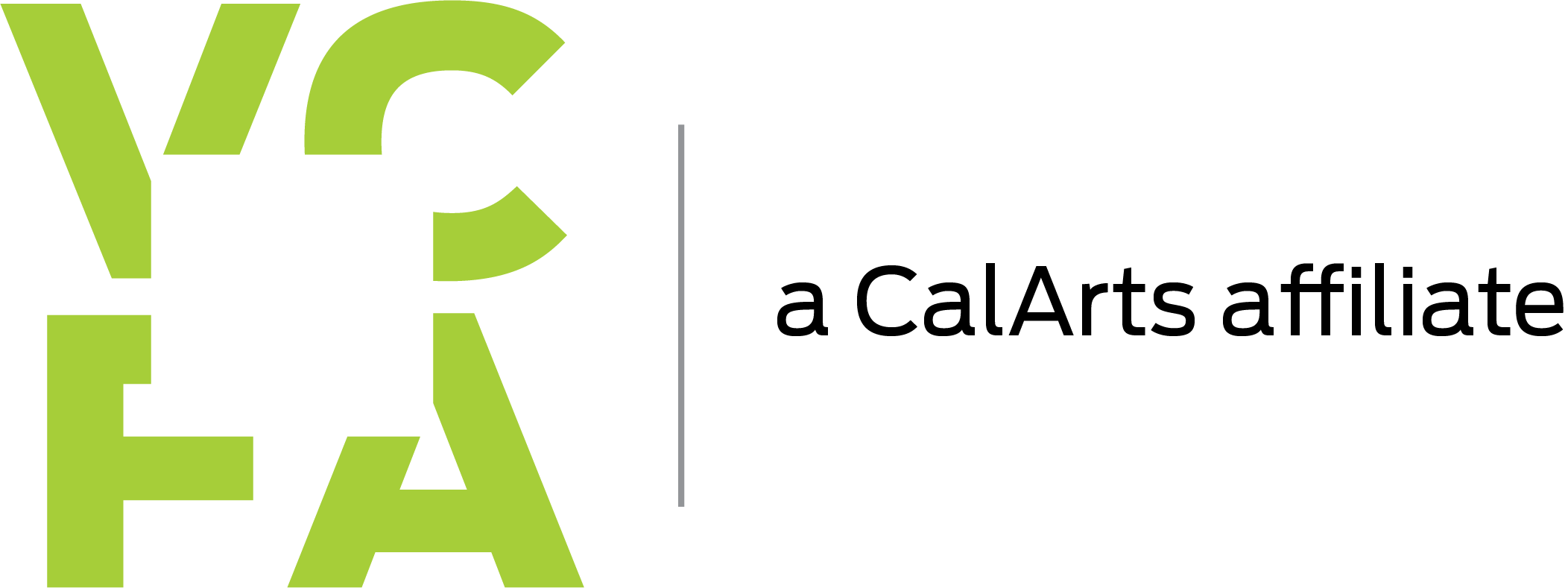ALUMNX STORY: Joshua Johnson, 2021 MFA in Film
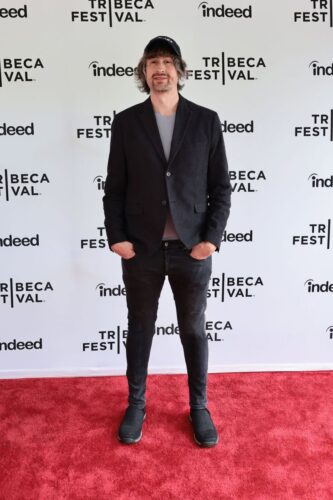 VCFA MFA in Film alumnx Joshua James Johnson (F ’21) is a writer, director, professor, and professional visual effects (VFX) artist. In his career, Johnson has worked on 27 feature films, including projects such as HBO’s NATIVE SON, A24’s A GHOST STORY, Disney’s HOCUS POCUS 2, and Donald Glover/Childish Gambino’s feature-length visual album, BANDO STONE & THE NEW WORLD.
VCFA MFA in Film alumnx Joshua James Johnson (F ’21) is a writer, director, professor, and professional visual effects (VFX) artist. In his career, Johnson has worked on 27 feature films, including projects such as HBO’s NATIVE SON, A24’s A GHOST STORY, Disney’s HOCUS POCUS 2, and Donald Glover/Childish Gambino’s feature-length visual album, BANDO STONE & THE NEW WORLD.
In 2023, Johnson was welcomed into the Visual Effects Society (VES), one of the most prestigious organizations for VFX artists.
VCFA spoke to Johnson about his Visual Effects Society honor, how he uses visual effects as a vehicle for storytelling, and how he strengthened his skills as a screenwriter at VCFA. Read excerpts from our conversation below, and support Johnson’s work at joshuajamesjohnson.com. Plus, watch and share his latest short film, MONUMENT.
The Interview
Q: As someone in the film industry, how did you find your way to working as a visual effects (VFX) artist? What drew you to such a niche?
A: I’ve always been fascinated by that movie magic. I’ll take you all the way back to my childhood. I have two brothers, and when we were younger, we would make movies together—even some stop motion things. I was always kind of in love with the process of making movies. Of course, when I saw JURASSIC PARK in the movie theater when I was about 10 or 11, I was just like, “I know that’s not real, but what’s happening? How does this all work?” And then on top of that, there was a program that the Discovery Channel did called MOVIE MAGIC in the early 90s, and it basically talked about the very beginnings of visual effects and some special effects too. And so from that point, I was hooked and fascinated by it.
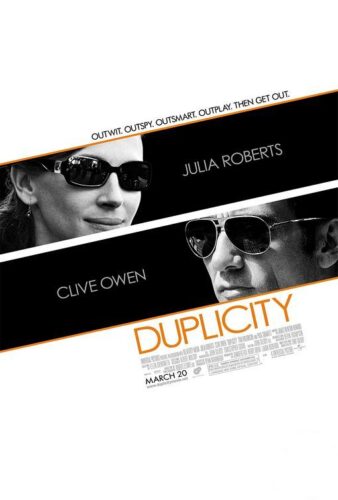 In undergrad, I was like, “Okay, I want to be a director, writer, maybe cinematographer.” By the time I graduated undergrad, I was lucky to get a job in the industry, but it was one that, after a couple of months, I was like, “Whoa, this isn’t what I wanted. This is not what I imagined.” I was making training videos, and I was kind of responsible for everything. I was shooting and editing and doing sound and lighting—kind of everything. So it was during that job I said to myself, “Okay, this is not what I want to do. And what I want to do is direct and make my own stuff.” But I understood that’s a pretty hard thing to do, and I remembered I’d always been fascinated with computer animation and visual effects. So I went crazy teaching myself visual effects. Something I learned was that I wasn’t going to repeat the same mistake I made in high school. I quit playing basketball after my sophomore year. Even though I still received a basketball scholarship in college, I always resented the fact that I gave up and didn’t give it my all. I didn’t want to make that same mistake with my other dream of being a filmmaker. So, I told myself I would work harder than anyone. No regrets. I started practicing on footage and schooling myself. I would watch behind-the-scenes DVDs, listen to commentaries, and try to replicate things scene-by-scene. … Back when forums were a little bit more of a thing, I would post my work online. Eventually I got a message… and it was from an extremely kind and talented Editor and VFX artist, Alan Bell. He first asked if I lived in LA. I didn’t, but then later, he said, “Hey, I think I have something you could probably work on from where you’re at in St. Louis.” They mailed me a hard drive for this project, which actually ended up being a movie called DUPLICITY with Julia Roberts. It was a million dollar movie with Universal Pictures. I only worked on four or five shots on it, but in that moment for me, it was my big break in my mind. That was kind of the beginning of it all. I owe a lot to Alan. That job and friendship really gave me the confidence I needed to continue to pursue my dreams.
In undergrad, I was like, “Okay, I want to be a director, writer, maybe cinematographer.” By the time I graduated undergrad, I was lucky to get a job in the industry, but it was one that, after a couple of months, I was like, “Whoa, this isn’t what I wanted. This is not what I imagined.” I was making training videos, and I was kind of responsible for everything. I was shooting and editing and doing sound and lighting—kind of everything. So it was during that job I said to myself, “Okay, this is not what I want to do. And what I want to do is direct and make my own stuff.” But I understood that’s a pretty hard thing to do, and I remembered I’d always been fascinated with computer animation and visual effects. So I went crazy teaching myself visual effects. Something I learned was that I wasn’t going to repeat the same mistake I made in high school. I quit playing basketball after my sophomore year. Even though I still received a basketball scholarship in college, I always resented the fact that I gave up and didn’t give it my all. I didn’t want to make that same mistake with my other dream of being a filmmaker. So, I told myself I would work harder than anyone. No regrets. I started practicing on footage and schooling myself. I would watch behind-the-scenes DVDs, listen to commentaries, and try to replicate things scene-by-scene. … Back when forums were a little bit more of a thing, I would post my work online. Eventually I got a message… and it was from an extremely kind and talented Editor and VFX artist, Alan Bell. He first asked if I lived in LA. I didn’t, but then later, he said, “Hey, I think I have something you could probably work on from where you’re at in St. Louis.” They mailed me a hard drive for this project, which actually ended up being a movie called DUPLICITY with Julia Roberts. It was a million dollar movie with Universal Pictures. I only worked on four or five shots on it, but in that moment for me, it was my big break in my mind. That was kind of the beginning of it all. I owe a lot to Alan. That job and friendship really gave me the confidence I needed to continue to pursue my dreams.
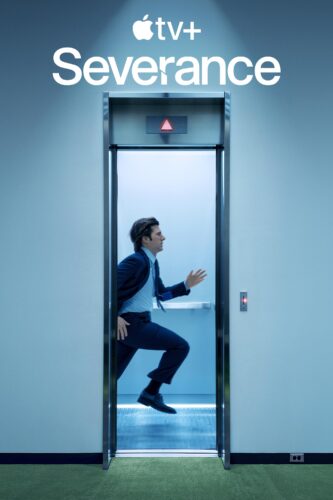 Since 2014 I’ve been freelancing and running my own business, working on a whole bunch of movies. I’ve had maybe six films I’ve worked on premiere at Sundance. Two years ago I worked on my first Disney film. I worked on a really big project, the Apple TV original SEVERANCE, before the semester started this year. In 2021, when I graduated from VCFA, I started teaching as well, full time. So now I teach full time as an Assistant Professor of Film and Television at Webster University, and I still do freelance work as well.
Since 2014 I’ve been freelancing and running my own business, working on a whole bunch of movies. I’ve had maybe six films I’ve worked on premiere at Sundance. Two years ago I worked on my first Disney film. I worked on a really big project, the Apple TV original SEVERANCE, before the semester started this year. In 2021, when I graduated from VCFA, I started teaching as well, full time. So now I teach full time as an Assistant Professor of Film and Television at Webster University, and I still do freelance work as well.
Q: As a VFX artist and educator, you speak to your students about how visual effects are a storytelling tool. Can you talk more about how visual effects are, in your words, a key vehicle for story?
A: That’s something I preach to my students, and is the reason I still like doing visual effects. For me, I think about [VFX] as just another tool for a filmmaker to use. So, just like a filmmaker talking about photography and asking how can I approach the shot, there’s no reason that you also shouldn’t be thinking about how visual effects can kind of enhance your story, enhance your shot, because that’s absolutely what it can do.
And for me, too, the visual effects I like the most are ones that are just kind of serving the story. So for example, you have a movie like GODZILLA MINUS ONE that came out and did really well. Obviously Godzilla is a pretty big component for that film. So you understand, yes, the visual effects are definitely supporting the story in that film, and you understand that right away. But other times, there are movies where David Fincher, for example, is pretty famous for using a crazy amount of visual effects in all of his films. His films are dramas with visual effects you wouldn’t necessarily see. It’s not sci-fi or anything, right? So just understanding that, no matter what, visual effects can actually support and enhance your story.
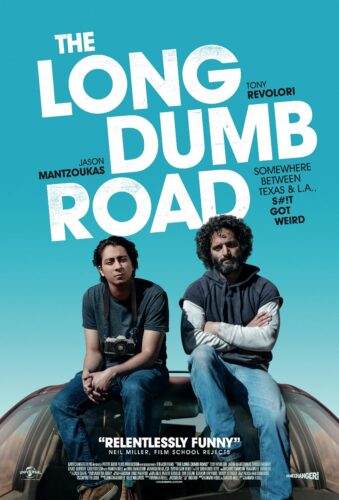 There is a film I worked on that premiered at Sundance called THE LONG DUMB ROAD, which is a road trip comedy directed by Hannah Fidel. She’s an incredible director and writer; at the time, she didn’t have a lot of experience working with visual effects. When she brought me on, and they had maybe like seven shots that they were going to do. … When we got into post, the shots they were looking to do, well they actually kind of scrapped those shots because they didn’t really work with the edit. But I ended up doing about 40 shots total. It was just more proof of how visual effects could support your story even on a smaller indie film. For example, there are some shots where the actors look up in the sky and the birds, they’re supposed to be swarming and stuff. And that’s kind of hard to get birds to do that for you, right? So that’s when visual effects came in. And it was an important part for this story. There were other elements, too. One of the actors, he’s got a black eye from a fight, but later on [in the film], the makeup wasn’t there when it needed to be there. So I just digitally added the makeup back to his face. There was a shot where it was supposed to be outside during winter time, so they would have a cold breath, and I added that breath digitally because it wasn’t cold when they were shooting. I’m always thinking about trying to treat my work to really fit into the story as much as possible. I don’t want someone to be taken out of the story because of the visual effects work, right?
There is a film I worked on that premiered at Sundance called THE LONG DUMB ROAD, which is a road trip comedy directed by Hannah Fidel. She’s an incredible director and writer; at the time, she didn’t have a lot of experience working with visual effects. When she brought me on, and they had maybe like seven shots that they were going to do. … When we got into post, the shots they were looking to do, well they actually kind of scrapped those shots because they didn’t really work with the edit. But I ended up doing about 40 shots total. It was just more proof of how visual effects could support your story even on a smaller indie film. For example, there are some shots where the actors look up in the sky and the birds, they’re supposed to be swarming and stuff. And that’s kind of hard to get birds to do that for you, right? So that’s when visual effects came in. And it was an important part for this story. There were other elements, too. One of the actors, he’s got a black eye from a fight, but later on [in the film], the makeup wasn’t there when it needed to be there. So I just digitally added the makeup back to his face. There was a shot where it was supposed to be outside during winter time, so they would have a cold breath, and I added that breath digitally because it wasn’t cold when they were shooting. I’m always thinking about trying to treat my work to really fit into the story as much as possible. I don’t want someone to be taken out of the story because of the visual effects work, right?
Especially since I’ve gotten my MFA, and have learned about screenwriting and have been doing that a lot more, knowing visual effects is just that much more helpful for me as a filmmaker. When I start writing, I know what I can get away with from the visual effects standpoint when it comes to world building or just really anything—what’s realistic, what’s not realistic. The visual effects are there to serve a purpose for my film. The story is still king, but just having even a little bit of knowledge about visual effects from a director/writer perspective goes a long way.
Q: You were recently welcomed into the Visual Effects Society (VES), one of the most prestigious organizations for VFX artists. Can you tell us more about what an honor like this means for you as a VFX artist?
A: It just kind of means the world to me, honestly, as someone who’s always been fascinated with visual effects.
The Visual Effects Society is a professional honorary society that consists of about 5,000 members worldwide. We’re all in it together to educate world audiences about visual effects, and then also to celebrate the craft as much as possible in all kinds of areas. We all come together and share different projects that we’re working on, and we get to see different talks and behind-the-scenes ideas. Everyone comes together for the greater good of visual effects in the film industry.
I’ve watched the Visual Effects Society awards—on TV, on YouTube—and now I actually get to participate in the nominations. I’m helping nominate these films and TV shows that could potentially win the Visual Effects Society Award, and that means everything to me.
Q: As a working filmmaker, what drew you to pursuing an MFA in Film with a concentration in screenwriting at VCFA?
A: Part of it was that I definitely was getting more interested in academia and teaching. The more I researched and talked to other professors that are currently teaching, I found out that, for the most part, you kind of need terminal degrees to teach. And I didn’t even know what a terminal degree was! Once I found out that was something you needed, that definitely intrigued me. But at the same time, I also didn’t want to go somewhere just to get a piece of paper, because I was already an adjunct instructor at a college, and they had an MFA in Film program there. I could have done it there, but that didn’t interest me. If I was going to do this, I wanted to get the most out of it I could. My best friend Kamau Bilal (F ’21) said he was also thinking about an MFA, and in fact, he was already enrolled and ready to start at VCFA. And I was like, “Wait a second, how cool would that be if we did this program together?”
I was pretty comfortable with visuals from the film side of things, and at that point had been doing that for a long time. But what always intimidated me was writing. I could think of a concept that seemed interesting, but I just didn’t really know where to go from there. How could I take my idea and translate that to a story on the page? That always scared me, and so I thought, well, if I’m going to do this, I want to get something out of it. I’m going to face my writing fears and figure out what works for me, so after it’s all done, I can continue to write and try to make my own things. Because at the end of the day, like I mentioned, when I first got in the industry, that’s what I wanted to do: tell my own story. I still have my own stories I want to tell, so that’s very much why I went to VCFA.
Q: At VCFA, you worked a lot on using memory in your script writing with your advisors—learning to dig deep into your own life to inspire your work. Your VCFA thesis film script was a semi-autobiographical piece called FIFTEEN. Can you tell us about that script and how memory plays a role in your creative process?
A: FIFTEEN a coming of age story, semi-autobiographical. I remember as I was thinking about what I was going to do for my thesis—I had some ideas in my head. Around that time as well, I was helping my dad pack and move out of my childhood home. I came across boxes of old notes from high school (we used to actually write notes and pass them—cell phones didn’t exist). …I exchanged notes with girls that I had crushes on. We talked about basketball, parties, and many other teenage things. But, going back to read some of those notes as an adult, it really showed me how much I was dealing with anxiety and lacked confidence in myself back then. When you’re a kid, you’re not aware of everything. You think everything is fine. But my parents were getting divorced when I was in sixth grade, and my mom ended up leaving for a couple of years and living in California. … And again, as a kid, you don’t know all of the ways it will affect you, but it certainly did, looking back now, strip away all of my confidence.
I had two different VCFA advisors for my thesis script: the brilliant Joan Darling and Laura Colella. I feel fortunate to have worked with them. Joan gave me this great exercise as I was starting the process. She was like, “Okay, what I want you to do is open up Final Draft and just start writing these memories. It doesn’t matter if they connect. Just keep writing memories from your life and write it in script form.” I started doing that, and before I knew it, I had about 60 pages.
Nowadays, I’ll talk to my own students and try to encourage that [memory exploration]. I mean, sure, it’s not always easy, right? Because if you’re very vulnerable with yourself and dig really deep, you sometimes don’t know what you’re going to find. But I think it’s really, really important, because at the end of the day, what separates us and what makes our stories unique is our own voices. And I think digging deep is part of the process of discovering our voice as an artist. You can have an interesting concept, and your visuals could be amazing, but if you don’t feel anything from that, it doesn’t matter. If you keep searching within, and search really deep, the more personal you make it, the more universal it’ll actually become. Because even if you’re telling a story that is completely different from your life, you can still use those memories, certain aspects of your own life, for your writing and for your characters. As humans, we’ve had so many different experiences and memories and so many things we can pull from—and it’s just untapped. So start digging.
Q: Finally, what advice would you give to filmmakers considering an MFA?
A: If you’re considering an MFA, then I highly recommend the low-residency MFA in Film program at VCFA. I had the most fantastic experience and was so lucky to work with genius filmmakers like Marya Cohn, Janicza Bravo, Joan Darling, Laura Colella, and Lucrecia Martel. To receive mentorship from such remarkable artists is invaluable.
For me, it allowed me to evolve as an artist and it really helped me find my voice as an artist. Before I started the program, I was terrified to write. And now, writing is still a scary and very daunting process, but at least I know my own process, how I can do it, and how I can get there—and I’m not scared of it. It’s exciting. In the program, you start to see the progress happen. The low-residency program at VCFA—along with just all the amazing faculty members and all of the different colleagues you’ll meet—will start you off on your journey.
